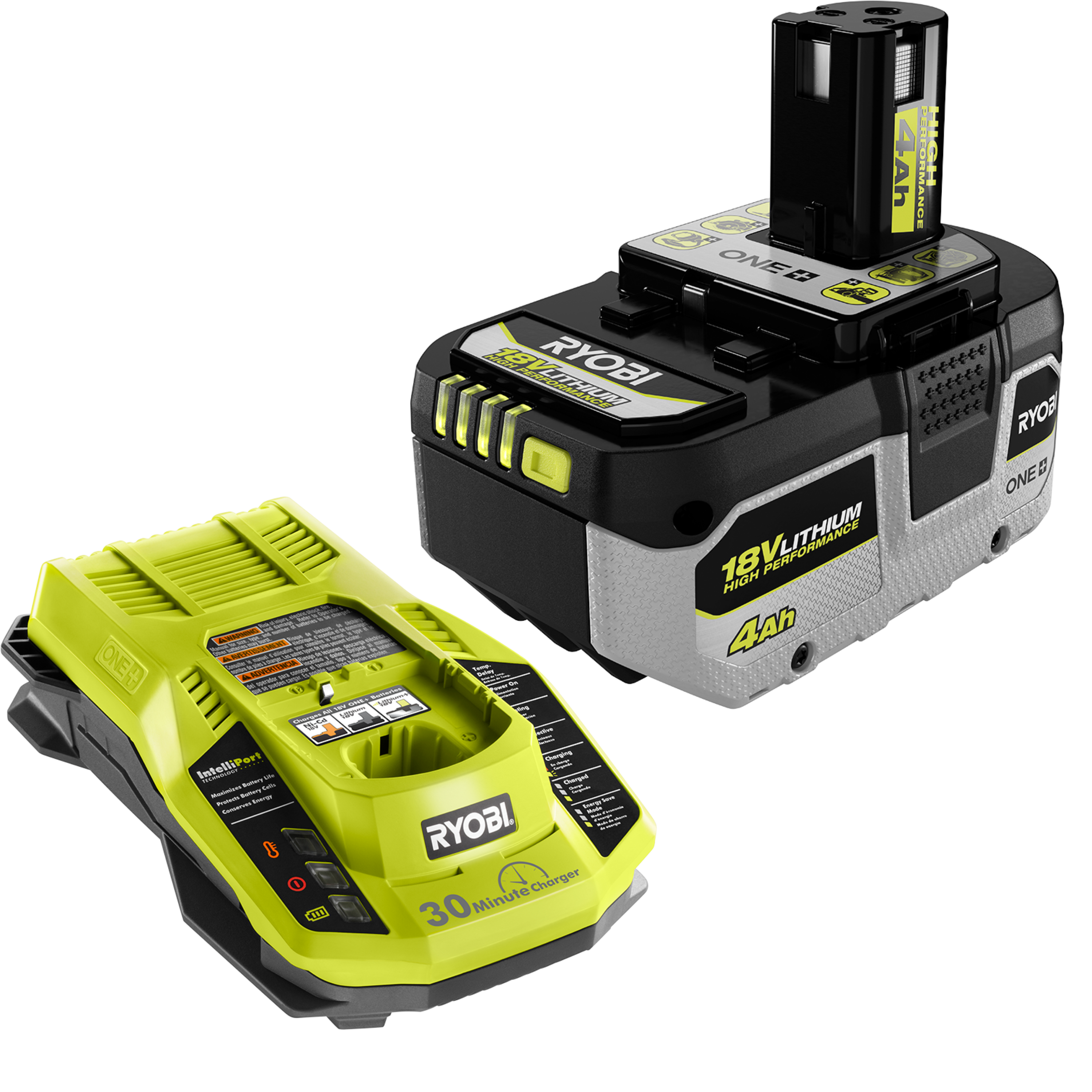Have you ever unpacked a new Ryobi tool and found yourself eagerly reaching for the battery, only to wonder if it’s ready to power up your next project? You’re not alone.
Many DIY enthusiasts and professionals alike find themselves asking: “Do Ryobi batteries come charged? ” Imagine the convenience of diving straight into your work without the delay of charging. The anticipation, the excitement of starting a new project – it all hinges on whether your battery is ready to go.
You’ll discover the answer to this pressing question, helping you save time and plan your projects more efficiently. Stay tuned to find out how your next project can be off to a running start, without the wait.

Credit: www.youtube.com
Contents
Ryobi Battery Packaging
Ryobi batteries are popular for their reliability and performance. The packaging plays a crucial role in preserving these attributes. Each battery is packed with care to ensure it reaches you in perfect condition. Let’s explore what you can expect from Ryobi battery packaging.
What’s Inside The Box
Opening a Ryobi battery box is straightforward. Inside, you’ll find the battery snugly secured. A user manual is usually included. This manual offers essential information about your new battery. Additionally, some packages may contain warranty cards. These cards provide details on battery coverage.
Initial Battery Charge Level
Ryobi batteries often arrive partially charged. This allows you to test the battery immediately. The charge level might vary slightly. Factors like shipping time can affect the initial charge. It’s recommended to charge the battery fully before use. Doing so ensures optimal performance for your tools.
Charging Process
When you purchase a new Ryobi battery, you might wonder about its charging process. Understanding this process can help you get the most out of your power tools. Let’s dive into the essential aspects like required chargers and how long you can expect to wait for a full charge.
Required Chargers
Ryobi batteries are designed to work with specific chargers. Make sure you have the correct charger to match your battery model. Using the wrong charger can lead to inefficient charging or even damage.
For instance, if you have a 40V battery, you’ll need a compatible 40V charger. Check the label on your battery to confirm its voltage before purchasing a charger. Having the right charger ensures safety and efficiency.
Charging Time Expectations
Charging times vary depending on the battery capacity and charger type. A standard 18V Ryobi battery might take about an hour to fully charge with a fast charger. However, larger capacity batteries, like the 40V, could take longer.
It’s crucial to plan your projects around these charging times. Have you ever started a project only to find your battery is dead? Avoid the frustration by keeping an extra charged battery on hand. This way, you can swap batteries and continue working without interruptions.
Consider setting a reminder to check your battery levels regularly. This proactive approach helps you ensure that you’re always ready to tackle your tasks. How do you manage your battery charging routine?
Understanding Battery Indicators
Have you ever wondered if your Ryobi battery is fully charged before you start your projects? A quick glance at the battery indicators can save you from guesswork and potential frustration. Knowing how to read these indicators ensures you’re always powered up and ready to go.
Led Indicators Explained
Most Ryobi batteries come equipped with LED indicators, a handy feature that communicates the battery’s status. These small lights can tell you whether your battery is charging, fully charged, or needs a recharge. Typically, a green light signals a full charge, while a red light indicates charging. This quick visual check prevents the hassle of stopping mid-task due to a drained battery.
Imagine you’re about to start a project that requires precision—like assembling a delicate furniture piece. You wouldn’t want your tools to suddenly stop because of an unexpected battery drain. The LED indicators are your go-to to ensure your battery is ready, saving you time and effort.
Reading Charge Levels
Beyond just knowing if your battery is charged or not, understanding charge levels can help you plan your work better. Some Ryobi batteries have multiple LED lights to show different charge percentages. For instance, three lights might mean you have 75% charge left. This information is crucial if you’re embarking on a long task and need to gauge whether you have enough power to finish.
Next time you pick up a Ryobi battery, take a moment to check the charge level. It might be the difference between completing your task uninterrupted or scrambling to find a backup battery. Ask yourself, how often have you checked the charge level before starting a project?
Equipped with this knowledge, you can make more informed decisions about when to charge your battery, ensuring you’re always ready for the next job. The battery indicators are not just lights—they’re your guide to efficient and hassle-free work.

Credit: www.youtube.com
Battery Care Tips
Taking care of your Ryobi batteries can prolong their life and efficiency. Proper maintenance ensures optimal performance and reduces the risk of damage. Understanding how to maximize battery life and store them properly can make a significant difference.
Maximizing Battery Life
Charge your batteries fully before use. Avoid letting them drain completely. This practice can prevent battery degradation. Use the correct charger designed for Ryobi batteries. Overcharging can lead to overheating and shorten battery lifespan. Monitor battery temperature during charging. Extreme temperatures can damage internal components. Clean battery contacts regularly. Dust and debris can interfere with performance.
Proper Storage Techniques
Store batteries in a cool, dry place. Avoid direct sunlight and moisture. Extreme conditions can reduce battery efficiency. Keep batteries away from metal objects. Short circuits can occur if terminals touch metal. Use a battery case for safe storage. This protects them from accidental damage. Check stored batteries periodically. Ensure they maintain charge and show no signs of wear.
Troubleshooting Charging Issues
Ryobi batteries are essential for powering your tools. But sometimes, charging issues arise. Understanding these problems helps maintain battery performance. This section provides insights into common problems and solutions. Let’s dive into the troubleshooting process.
Common Problems
Users often face several issues with Ryobi battery charging. One frequent problem is the battery not charging at all. Sometimes, the battery charges slowly. At times, the charger indicates a full charge, but the battery doesn’t work. Overheating during charging is another common concern.
Solutions And Tips
To fix these issues, start with the basics. Ensure the charger is plugged in correctly. Check for any visible damage on the charger or battery. If the battery isn’t charging, try cleaning the contacts. Use a soft cloth for this purpose. For slow charging, verify the power outlet. Sometimes, changing to a different outlet helps.
If the charger shows a full charge but the battery doesn’t work, reset the battery. Remove it from the charger and wait a few minutes. Then, place it back in the charger. This can often resolve the issue. To prevent overheating, avoid charging in hot environments. Always charge in a cool, dry place.
User Experiences
Ryobi batteries typically come partially charged, allowing immediate use for brief tasks. Users may need to fully charge them before extended use. This ensures optimal performance and longer battery life during projects.
User experiences with Ryobi batteries often provide valuable insights. Many users wonder if Ryobi batteries come pre-charged. The answer varies based on consumer reviews and expert opinions. This section explores real-life user feedback and insights from industry experts.Consumer Reviews
Ryobi users share their experiences online. Some find their batteries charged right out of the box. This makes it easy to start using tools immediately. Others report batteries needing a charge before use. Factors like storage time affect battery charge levels. Users appreciate the convenience of pre-charged batteries. Yet, charging before use is not a major inconvenience for most.Expert Opinions
Experts often test Ryobi batteries. They examine charge levels upon purchase. Many experts note that new batteries may come partially charged. This helps to test products quickly. Full charge ensures optimal performance. Experts recommend charging batteries fully before heavy use. This ensures longevity and efficiency. Some experts discuss battery storage practices. Correct storage maintains charge levels and battery health. Users benefit from understanding expert insights.
Credit: espanol.ryobitools.com
Frequently Asked Questions
Are Ryobi Batteries Pre-charged?
Ryobi batteries usually come with a partial charge. This allows for immediate use upon purchase. However, it’s recommended to fully charge them before first use. This ensures optimal performance and battery longevity. Always check the charge level before starting your project to avoid interruptions.
How Long Does It Take To Charge A Ryobi Battery?
Charging time for Ryobi batteries varies by model. Most take about 30 minutes to 2 hours. Using a compatible Ryobi charger ensures efficient charging. Always refer to the manual for specific charging guidelines. This helps maintain battery health and performance over time.
Can I Use Ryobi Batteries Right Out Of The Box?
Yes, Ryobi batteries can be used immediately. However, they may not be fully charged. For best results, charge them completely before use. This ensures maximum performance and battery life. Always follow manufacturer instructions for optimal usage and safety.
Why Should I Fully Charge Ryobi Batteries First?
Fully charging Ryobi batteries ensures maximum capacity and performance. It helps calibrate the battery’s power management system. This process can extend the battery’s lifespan. Fully charged batteries also provide consistent power output. Always follow the manufacturer’s charging recommendations for best results.
Conclusion
Ryobi batteries usually arrive with a partial charge. This means they can be used immediately for small tasks. For longer use, it’s wise to fully charge them first. Charging ensures longer battery life and optimal performance. It’s simple to do with a Ryobi charger.
Always check your battery level before starting a big project. This saves time and effort. Keep your batteries stored in a cool, dry place. This helps maintain their charge and lifespan. Regular maintenance extends their usage and efficiency. Stay prepared with charged batteries for any project at hand.

